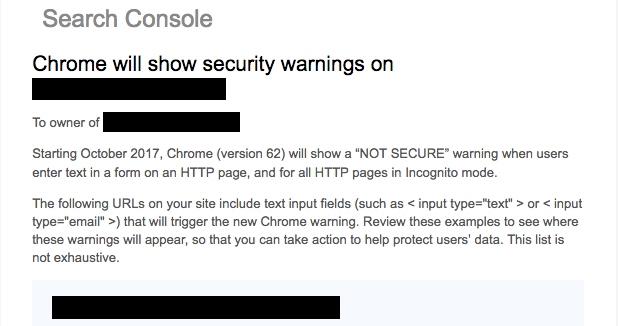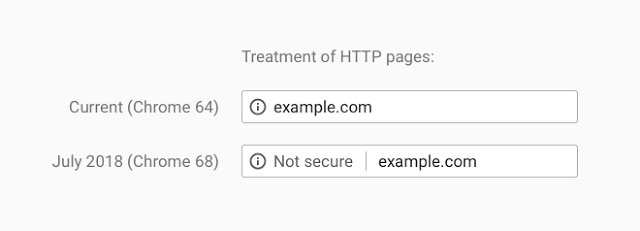
Effective July 2018, Google Chrome Will Mark http as ‘Not Secure’!
Do you notice some changes in Chrome when you try to load a website recently? On the website address bar, we can see “Secure” or “Not Secure” for certain websites.
Well, an announcement by Google at April, 2017. Google Chrome 62 new security feature started to kicked in in October 2017. Google had also sent email notifications to all site owners via Google Search Console about this issue.
It’s not easy to keep up with every single update Google releases, and every one may not be relevant to your business/organisation. However, their announcement in this year is one we all need to pay some serious attention to. Starting in July of 2018, Google will begin marking sites without SSL as “not secure.” starting with current Chrome 68, set for release in July 2018.
And Now, The next move is scheduled to take effect with the release of Chrome 69, scheduled for September, this year. – Updated on May 2018.
Below is a copy of Google’s notification:

Effective July 2018, Google Chrome browser will mark non-HTTPS as ‘Not Secure’
Here is the insecure warning sign for chrome 62 (Oct 2017):

Here is the insecure warning sign for chrome 68 (July 2018):

When users visit a HTTP website, Chrome will show the ‘Not Secure’ warning!

For more detailed information, feel free to refer to the original blog post from Google.
Google has always done their best to make sure the Internet is a safe place to work, connect and have fun. As a website owner, we have the responsibility to make sure the information of our visitors is secure.
Why You Need SSL Certificate?
- To Prevent Your Customers’ Sensitive Data Such As Credit Card Numbers And Passwords From Being Intercepted By A Third Party.
- To Help Visitors To Identify Your Website As Legitimate And Increase Visitor Trust.
- Make Potential Customers Feel Safe And Confident To Perform Online Transactions Or Do Business With You.
Do you want your website to show “Secure”? We have a solution for you
You are able to turn on Auto SSL if you are using Exabytes Linux Hosting, Exabytes WordPress Hosting, or Exabytes Windows Hosting (Plesk Control Panel only). With AutoSSL, your websites are automatically secured with a Domain Validated SSL certificate.
If you are not sure about your Web Hosting SSL Status, You are advised to get a SSL certificate to avoid loss of traffic to access your website. View SSL Plans
Here are some guidelines for how to enable SSL connection on a website.
- General Website: Refer here
- WordPress: Refer here
- Joomla: Refer here
- Opencart: Refer here
- Magento: Refer here
4 Things to Consider Between FREE & PAID SSL
-
Liability Protection
In general, if you purchase an SSL certificate, you’re going to get better liability protection than free SSL. If you run an eCommerce store, think of this as insurance for your business.
-
Support
Certificate Authorities (CAs) for paid certificates are committed to providing round clock support to customers. On the other hand, free SSL don’t assist customers with such remarkable support and you are responsible for setting up your free SSL on your own.
-
Different Types Of Validation
Free SSL only offer Domain Validation (DV) rather than Organization Validation (OV) and Extended Validation (EV). Extended Validation SSL take website security a step further compared to domain validation SSL. It’s secure with a rigorous vetting process that enables them to have the signature green address bar at the top of your browser.
-
Validity Period
Some Free SSL certificates required its users to renew every 30-90 days. In the case of paid certificates, they can be issued for a period of 1-2 years.
So don’t wait, take action today and let your visitors know that your website is a secure one so that they can surf and buy with confidence.
Cheers!
